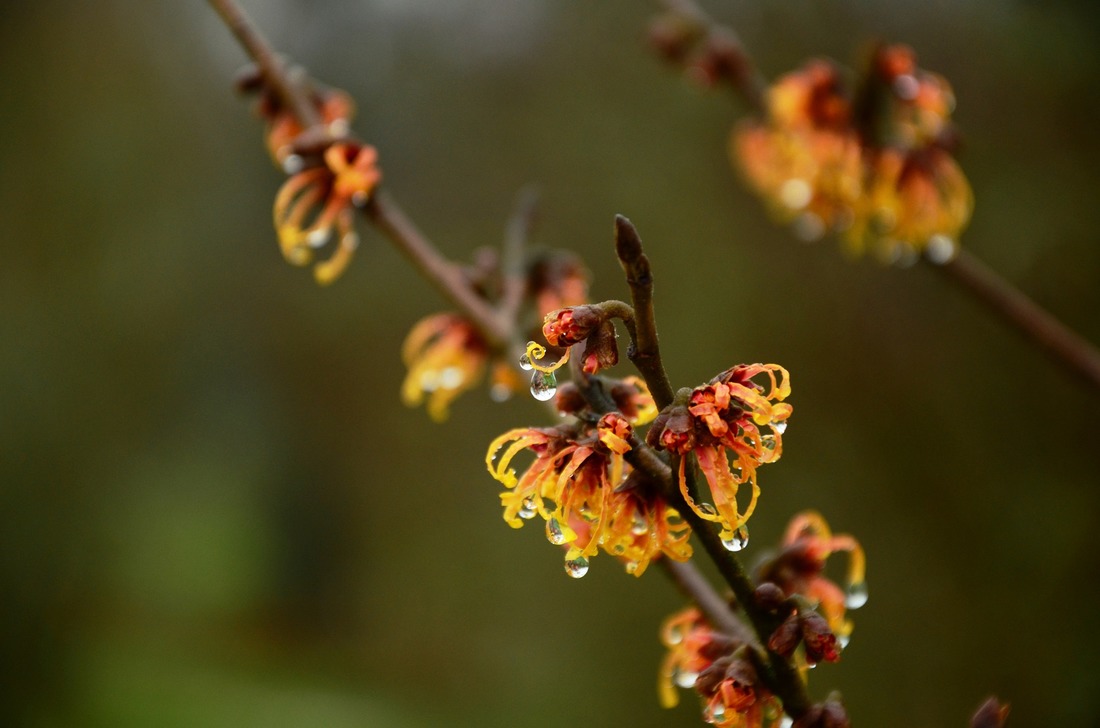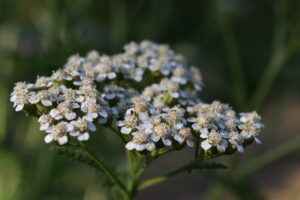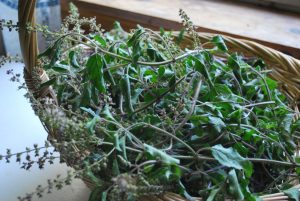Links contained in this post and elsewhere on my website may include affiliate links. When you make a purchase through these links, I earn a commission at no additional cost to you. I only link to products and services that I love - and that I think you will love, too!
Herbal trees and shrubs are useful additions around your yard or homestead. They can provide shade, wildlife habitat, and useful barks, leaves, and berries for the home herbalist. They are also easy to care for! Of course, trees and shrubs do require more planning to incorporate into your home landscape. They need more space than other types of herbs and grow more slowly.
Elder, linden, witch hazel, hawthorn, and cramp bark are my top five herbal trees and shrubs for home landscaping. Read on to learn more about them and what they need to thrive.
Elder
Sambucus nigra
The traditional variety in European herbalism is Sambucus nigra, but the native variety, S. canadensis, is also a good choice. Elder plants are also available as named cultivars. These varieties have been selected for larger berries or showier foliage than wild strains. Elder likes to keep its feet wet and prefers to grow in ditches or at the edges of water, but I’ve also seen it thrive in areas with a very high water table even if the soil seems a bit dry in the summer.
In the wild, it’s often found growing at the edges of fields or beside taller trees. Elder actually grows very easily from cuttings, so if you have an elder nearby and permission to harvest a little, it’s easy to take a small piece and grow your own.
Linden
Tilia cordata
You will need lots of room to grow linden because it’s a full sized tree, but it makes a beautiful landscape specimen. It likes moist but well drained soil, and can handle partial shade.
Although there is an American linden, (T. americana), the European variety is the most commonly used variety for making linden flower tea and herbal preparations. It is often used as a landscape tree in America. Bees and butterflies love the flowers, so it’s a good choice if you want to support pollinator habitat.
Hawthorn
Crataegus laevigata or C. monogyna
This herbal shrub can become large – up to 30 feet tall and wide. As it’s name suggests, it does have thorns. Hawthorn isn’t picky about soil and can be grown in sun or part shade. Ornamental varieties are common, but may or may not have the herbal characteristics found in the originals.
The seeds can be a little tricky to start because they can take up to two years in the right conditions to germinate. If you want to grow a hawthorn it may be better to start with a seedling.
It usually bears a heavy crop of berries every fall that are harvested after first frost for the best flavor.
Crampbark
Viburnum opulus
This small tree or shrub bears showy blossoms that are a beautiful feature plant in a home landscape. This herb doesn’t do well in dry soils. Its natural habitat is in woodland and forest edges, so it does alright with a little shade. The kind typically for sale in herb shops is the European variety, but there is variety that is native to the US (V. opulus var americanum). Several native vibunums have ethnobotanical uses as well. Learn more about crampbark in this article at Herbs with Rosalee and this one by herbalist Richard Whelan.
Witch Hazel
Hamamelis virginiana
I saved one of my favorites for last! Witch hazel is a medium sized shrub that gets around 15 feet tall, but what’s really lovely about it is the unusual flowers that bloom in late winter before anything else – and they are fragrant! Like most of the other plants on today’s list it does fine in either full sun or part shade and likes the soil to be moist but well drained.


